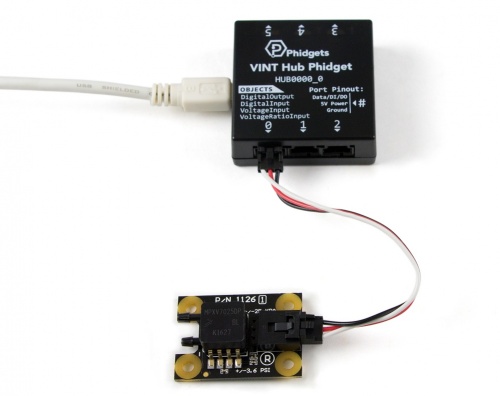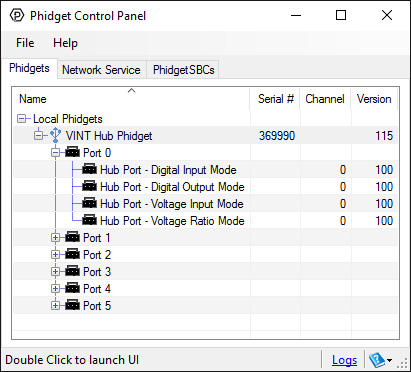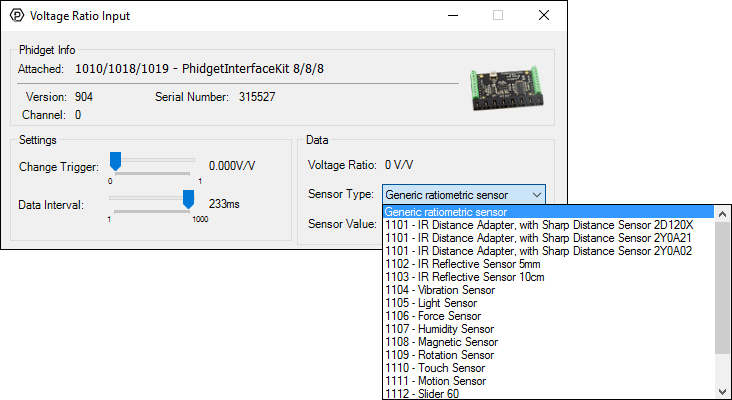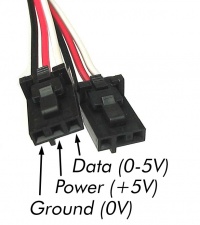Replaced by the 1126_1 – Differential Air Pressure Sensor ± 25kPa
The Differential Pressure Sensor is a dual ported air pressure sensor that measures the pressure difference between the two ports. It can measure both positive and negative pressure from –25kPa to +25 kPa.
This sensor is designed to measure the pressure of clean, non-condensing air. Contact with moist air (i.e, human breath), dusty air, or other gases can shorten the lifespan of the sensor.
| Sensor Properties | |
|---|---|
| Controlled By | VoltageRatio Input |
| Sensor Type | Gas Pressure (Differential) |
| Sensor Output Type | Ratiometric |
| Pressure Differential Min | -25 kPa |
| Pressure Differential Max | 25 kPa |
| Case Pressure Max | 200 kPa |
| Measurement Error Max | ± 5 % |
| Response Time Max | 1 ms |
| Electrical Properties | |
| Supply Voltage Min | 4.8 V DC |
| Supply Voltage Max | 5.3 V DC |
| Current Consumption Max | 10 mA |
| Output Impedance | 1 kΩ |
| Output Voltage Min | 250 mV DC |
| Output Voltage Max | 4.8 V DC |
| Physical Properties | |
| Operating Temperature Min | 0 °C |
| Operating Temperature Max | 85 °C |
| Recommended Tubing Size | 3⁄32″ |
| Customs Information | |
| Canadian HS Export Code | 8473.30.00 |
| American HTS Import Code | 8473.30.11.80 |
| Country of Origin | CN (China) |
Welcome to the 1126 user guide! In order to get started, make sure you have the following hardware on hand:
Next, you will need to connect the pieces:

Now that you have everything together, let's start using the 1126!
In order to demonstrate the functionality of the 1126, we will connect it to the HUB0000, and then run an example using the Phidget Control Panel on a Windows machine.
The Phidget Control Panel is available for use on both macOS and Windows machines. If you would like to follow along, first take a look at the getting started guide for your operating system:
Linux users can follow the getting started with Linux guide and continue reading here for more information about the 1126.
After plugging in the 1126 into the HUB0000, and the HUB0000 into your computer, open the Phidget Control Panel. You will see something like this:

The Phidget Control Panel will list all connected Phidgets and associated objects, as well as the following information:
The Phidget Control Panel can also be used to test your device. Double-clicking on an object will open an example.
Double-click on a Voltage Ratio Input object in order to run the example:

General information about the selected object will be displayed at the top of the window. You can also experiment with the following functionality:
The 1126 uses bipolar processing to provide an accurate, high level analog input signal that is proportional to the applied pressure. When the sensor is plugged in, the voltage defaults to 2.5V ±2%.
The sensor comes with a positive top port and a negative bottom port. These ports have a diameter of 2.79mm to 3.30 mm (nominal 3mm). For hosing, we recommend using polyurethane tubing. We have had good results with 2.4mm ID tubing from EMI. In imperial measurement, 3/32” ID tubing is equivalent. This is available through laboratory supply stores such as Cole Parmer.
The Phidget libraries can automatically convert sensor voltage into pressure (kPa) by selecting the appropriate SensorType. See the Phidget22 API for more details. The Formula to translate voltage ratio from the sensor into pressure is:

The Phidget Cable is a 3-pin, 0.100 inch pitch locking connector. Pictured here is a plug with the connections labelled. The connectors are commonly available - refer to the Analog Input Primer for manufacturer part numbers.
| Date | Board Revision | Device Version | Comment |
|---|---|---|---|
| March 2008 | 0 | N/A | Product Release |
| January 2016 | 1 | N/A | New PCB shape and color |